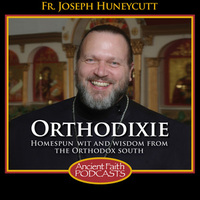 Born in Naissus, Serbia, around A.D. 280, his full name was C. Flavius Valerius Constantinus. His mother, Helena, was a remarkable woman of “inferior birth” and his father, Constantius Chlorus, was a Roman officer who was later elevated to “Caesar” and “Augustus”. Chlorus had other children by another wife, but only a son, Constantine, from Helena. Upon his father’s death in 306, Constantine was proclaimed ruler by the troops. He wasn’t the only claimant to the throne and, prior to a major skirmish for control, Constantine had a vision of a cross of light in front of the sun and he heard a voice saying, “In this sign conquer.” Profoundly affected by this revelation, Constantine had a large cross made to be borne into battle. Himself wearing the sign of the Cross, and his charges bearing the emblem on their shields, Constantine defeated one of his rivals, Maxentius, at Milvian Bridge in Rome. To show his gratitude to the God of the Christians, Constantine granted religious liberty, thereby “legalizing” Christian worship, in his famous Edict of Milan of 313. It wasn’t until 325, with the defeat of Licinius, that the Roman Empire was united under a sole ruler, Constantine. Shortly thereafter, he moved the capitol of the empire from Rome to “New Rome,” or Constantinople.
Born in Naissus, Serbia, around A.D. 280, his full name was C. Flavius Valerius Constantinus. His mother, Helena, was a remarkable woman of “inferior birth” and his father, Constantius Chlorus, was a Roman officer who was later elevated to “Caesar” and “Augustus”. Chlorus had other children by another wife, but only a son, Constantine, from Helena. Upon his father’s death in 306, Constantine was proclaimed ruler by the troops. He wasn’t the only claimant to the throne and, prior to a major skirmish for control, Constantine had a vision of a cross of light in front of the sun and he heard a voice saying, “In this sign conquer.” Profoundly affected by this revelation, Constantine had a large cross made to be borne into battle. Himself wearing the sign of the Cross, and his charges bearing the emblem on their shields, Constantine defeated one of his rivals, Maxentius, at Milvian Bridge in Rome. To show his gratitude to the God of the Christians, Constantine granted religious liberty, thereby “legalizing” Christian worship, in his famous Edict of Milan of 313. It wasn’t until 325, with the defeat of Licinius, that the Roman Empire was united under a sole ruler, Constantine. Shortly thereafter, he moved the capitol of the empire from Rome to “New Rome,” or Constantinople.
For the remainder of his life, Constantine’s energies were spent uniting, improving, and strengthening his empire. Though his “conversion experience” happened with the vision of the heavenly cross, Constantine was also influenced by his moral conscience, military leaders, and government rulers who had embraced the Faith. This sudden turn of events — religious liberty, the end of the persecutions, and the freeing of Christian prisoners — brought about a joyous time that most Christians had thought impossible. One ancient writer, Tertulian, had previously written: “But the Caesars also would have believed in Christ, if either the Caesars had not been necessary to the world or if Christians too could have been Caesars.” Constantine’s reign proved otherwise.
While it is true that Constantine attempted to hold his empire together, politically, by showing equal favor to Christianity and the practice of Sun worship, to claim that he continued to worship the Sun after his “conversion” is, historically, false. Time would prove that mixing the major religions in a form of syncretism was not the answer. Under his administration, magic and divination were suppressed. As for the age-old practice of emperor worship, though many practices continued, Constantine abolished the practice of sacrifice to the emperor. And, much like the earlier Peace of Rome (Pax Romana) is historically hailed as aiding the spread of the Gospel, Constantine’s allowing bishops to use the Imperial mail service did much to spread Christ’s Church.
Uniting an Empire under the “new” religion of Christianity was no easy task. Now that there was religious freedom, there was also greater concern for orthodoxy (right faith and doctrine). Constantine’s convictions led him to call together church leaders from time to time to deal with disputes of Christian doctrine, particularly in North Africa. Then, in 325, an erroneous teaching, or heresy, threatened to tear apart the empire. There was a priest in Alexandria named Arius who was teaching that there was a time when the Son of God was not. In other words, Arius believed that the Son was not equal with the Father, but a creature. Though Arius maintained that the Son was a superior creature, he believed he was a creature nonetheless. In June of 325, Constantine summoned the bishops of the Church to a council held in Nicea in Bithynia.
No new doctrine was invented by the Council of Nicea or by Constantine himself. Contrary to popular lore [e.g., Dan Brown’s bestseller, “The Da Vinci Code”], the Bible’s contents were not ratified at the Nicean Council, Jesus was not “elected” Son of God, Mary Magdalene was not part of the agenda, and various other gospels were not suppressed. Rather, the bishops upheld what they maintained had always been the understanding of the universal Church of Christ: the Son is co-equal, co-eternal, “one in essence” with the Father. Though Arius was condemned and his teaching deemed heretical, the Arian influence and doctrinal disputes continued for some time with Constantine himself even vacillating.
With the ascension of Constantine to supreme ruler of the Roman empire (A.D. 324), the first period of the Christian era (Apostles, Pentecost, and Persecutions) came to a close. What lay ahead was the creation of the Christian Empire of Byzantium. Where at one time the Roman authorities had tried to snuff out the Christian faith, the tables turned and it was now time for pagans to go underground. In 330, after his inauguration, Constantine proclaimed that pagan services would no longer be performed within Constantinople. He was determined that the New Rome not be tainted by the errors of Old. Under his reign, Constantine showed many favors to the Christian church and the law of the land reflected Christian principles. Along with being a great benefactor of the Church, in 321 he ordered that the day of Christian worship, Sunday, be made a public holiday.
Constantine was not without faults. His sins and shortcomings were many, including the killing of his son, Crispus, and his second wife, Fausta, due to rumors and confusion about an illicit affair between them. Yet, there is no denying his historical importance and pivotal role in the flourishing of the Christian church. He had hoped to be baptized in the Jordan, but ill health prevented it. Instead, shortly after Easter in 337, Constantine was baptized in the suburbs of Nicomedia by, ironically, the Arian bishop Eusibeus. (It should be noted that postponing baptism until late life, near death, was a common practice in the fourth century.) He died, not long after, on the Feast of Pentecost, 22 May. His body was interred in Constantinople, in the Church of the Twelve Apostles. Constantine is honored, along with his mother, Helena, as a saint in the Orthodox Church whose feast day is 21 May.
This article was originally published on the website The Da Vinci Dialogue. Such historical information is pertinent to Christians as the movie, “The Da Vinci Code,” is set for release — just in time for Saint Constantine’s Day — on May 19th.
Other Orthodox authors on The Da Vinci Dialogue …
For a complete list of essays on The Da Vinci Dialogue … go H E R E.











